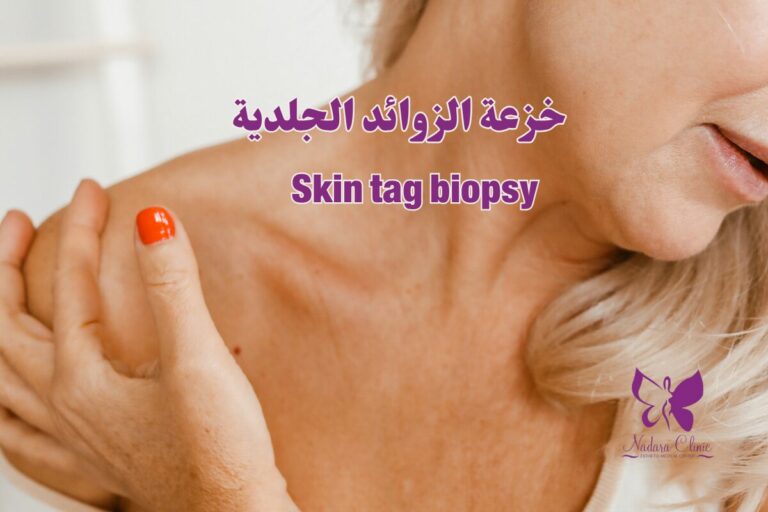Pityriasis alba is a common, non-cancerous skin disorder that usually affects children between the ages of 6 and 12. These patches appear mainly on the face, but they can appear on different areas of the body as well. The white bran was named by this name; Due to its scaly appearance and white spots, what are the ways to treat this disease? This is what we will explain with the Freshness Center for Dermatology, Laser and Cosmetology in Hurghada.
What is pityriasis albicans disease?
Pityriasis albicans is a skin disorder that mostly affects children and young adults. The exact cause is unknown; However, the condition is thought to be related to eczema, a common skin disorder that causes an itchy, scaly rash.
People with pityriasis albicans develop red or pink spots on their skin, which are usually oval. The spots disappear with moisturizing creams, or they go away on their own. However, they often leave pale marks on the skin after the redness fades.
Causes of pityriasis albicans
The exact cause of pityriasis albicans is unknown. However, it is usually considered a mild form of atopic dermatitis, a type of eczema. Eczema may be caused by an overactive immune system that responds aggressively to irritants, as the skin's ability to act as a barrier is reduced in people with eczema.
The immune system ignores normal proteins and attacks only proteins of harmful substances, such as bacteria and viruses. If you have eczema, your immune system may not always distinguish between the two and instead attack healthy substances in your body, which causes inflammation.
It's similar to an allergic reaction, but most people outgrow their eczema and pityriasis albicans by the onset of puberty.
Who is at risk of getting pityriasis albicans?
Pityriasis albicans is more common in children and adolescents. It occurs in about 2 to 5 percent of children, and it appears most frequently in children aged 6 to 12 years. It's also very common in children with atopic dermatitis, an itchy skin infection.
Pityriasis albicans appears in children who take hot baths regularly, or who are exposed to the sun without sunscreen. However, it's not clear if these factors cause the skin condition. Also, pityriasis albicans is not contagious.
white bran symptoms
White roughness appears as pale or light plaques on the skin. Doctors may describe plaques as hypopigmented, which means that the affected skin does not contain much melanin. Melanin is the natural pigment that determines hair, eye and skin color.
Plaques, or hypopigmented lesions, tend to develop in:
- The face, especially the cheeks.
- the arms.
- upper torso.
People may have 4 to 20 lesions, which tend to be about 0.5 to 5 cm in diameter. The lighter spots are usually more noticeable in people with darker skin. In people with fair skin, the spots are more noticeable when they have a tan.
In many cases, pityriasis white begins with scaly, discolored patches that may be itchy and round or oval in shape. These symptoms improve, but leave behind hypopigmented patches. The skin gradually returns to its usual appearance, but this can take several months to years, and for most people, the condition improves within one year.
You may be interested in: Goodbye chickenpox"
Diagnosis of bran alba
Your doctor can diagnose pityriasis albicans by looking at the rash and reviewing the symptoms and your child's medical history. Pityriasis albicans is often confused with tinea versicolor. The growth of the fungus on the skin can result in white lesions. However, there are several ways a doctor can distinguish between the two disorders:
- A Wood's lamp examination uses ultraviolet light to highlight differences in skin tone. It is used in a dermatologist clinic in Hurghada in a dark room.
- Potassium hydroxide (KOH) can be used to diagnose fungal infections, such as tinea versicolor, or other fungal conditions, such as tinea of the body (ringworm), and examine them under a microscope. This process makes the mushrooms easier to see.
Bran white can also be confused withvitiligoIt is an autoimmune disease in which pigment is lost in some patches of skin. However, vitiligo has very distinct boundaries, which will help your doctor distinguish between the two.
You may be interested in: Cellulite"
white bran treatment
Treating pityriasis albicans is not always necessary. Most cases usually resolve on their own in adulthood; However, many parents choose to treat it for cosmetic reasons, especially if their child is self-conscious about their skin.
Even with treatment, recovery can sometimes take several months, and your child should avoid tanning beds (natural or artificial), and use sunscreen frequently to speed healing.
- refreshments;
Moisturizers containing petroleum jelly, mineral oil, squalene, or dimethicone can help soften skin and reduce flaking, especially on the face. Effective, inexpensive brands include: Aquaphor, Aveeno Cream, and Eucerin.
You can ask your doctor for recommendations, and good skin hygiene, in general, can help the spots heal quickly.
- Hydrocortisone without a prescription.
You can use over-the-counter (OTC) 1% hydrocortisone cream (topical steroid) in moderation if there is itching. However, caution should be exercised when using hydrocortisone on the face. Do not use over-the-counter hydrocortisone for more than four weeks in a row unless your doctor advises you to, and do not apply it around the eyes or on the eyelids.
- Topical calcineurin inhibitors.
Elidel (pimecrolimusProtopic (tacrolimus) is a non-steroidal drug that your doctor may prescribe to clear up the rash, and topical calcineurin inhibitors are often used to treat eczema. It is used without authorization for pityriasis albicans, meaning it has not been specifically approved by the Food and Drug Administration for this purpose.
You may be interested in: Rosacea"
When do you call the doctor?
Pityriasis albicans usually gets better over time without treatment from a doctor, and your pharmacist may recommend over-the-counter skin treatments to help with symptoms, such as itching or discoloration.
The person should visit Dr. Amani Al-Tawabti at the Freshness Center for Dermatology, Laser and Cosmetology in Hurghada; For advice if his symptoms interfere with daily life, higher doses of prescription skin treatments may also be recommended.
You may be interested in: mask pills"
Pityriasis alba is a non-contagious skin disease, not cancerous, so you can manage the disease and prevent its development with the appropriate treatment plan, which is offered to you by the Freshness Center for Dermatology, Laser and Aesthetics in Hurghada.






